Want to get the very best out of your ground-breaking Toyota hybrid? We’ve gathered a number of hybrid driving hints and tips that will help you to get the best from the system, improving fuel consumption and getting you further for less.
Whichever Toyota hybrid you’ve set your heart on, the following tips and pointers should maximise the range and fuel economy of your Toyota.
The basics
It’s not just hybrids that benefit from the first seven tips – these will help to improve any car’s fuel efficiency:
- Clear out the boot! Keeping the boot free of unnecessary weight will give your car and immediate boost in performance and economy.
- Check your tyre pressures – dig out your owner’s manual, and do a weekly check to ensure that your tyres are correctly inflated in line with Toyota’s recommendation. Or read our handy tyre pressures article here.
- Think ahead – by planning your journeys, you can avoid traffic jams and minimise the likelihood of getting lost.
- Shut up! Closing the windows and sun roof at speeds above 45mph will reduce drag, reducing fuel consumption.
- Remove unused roof racks, boxes and bike racks – they’re a real drag too!
- Steady as she goes – maintain a steady speed and don’t go over the speed limit.
- Smoothly does it! Try to avoid sudden braking or acceleration.
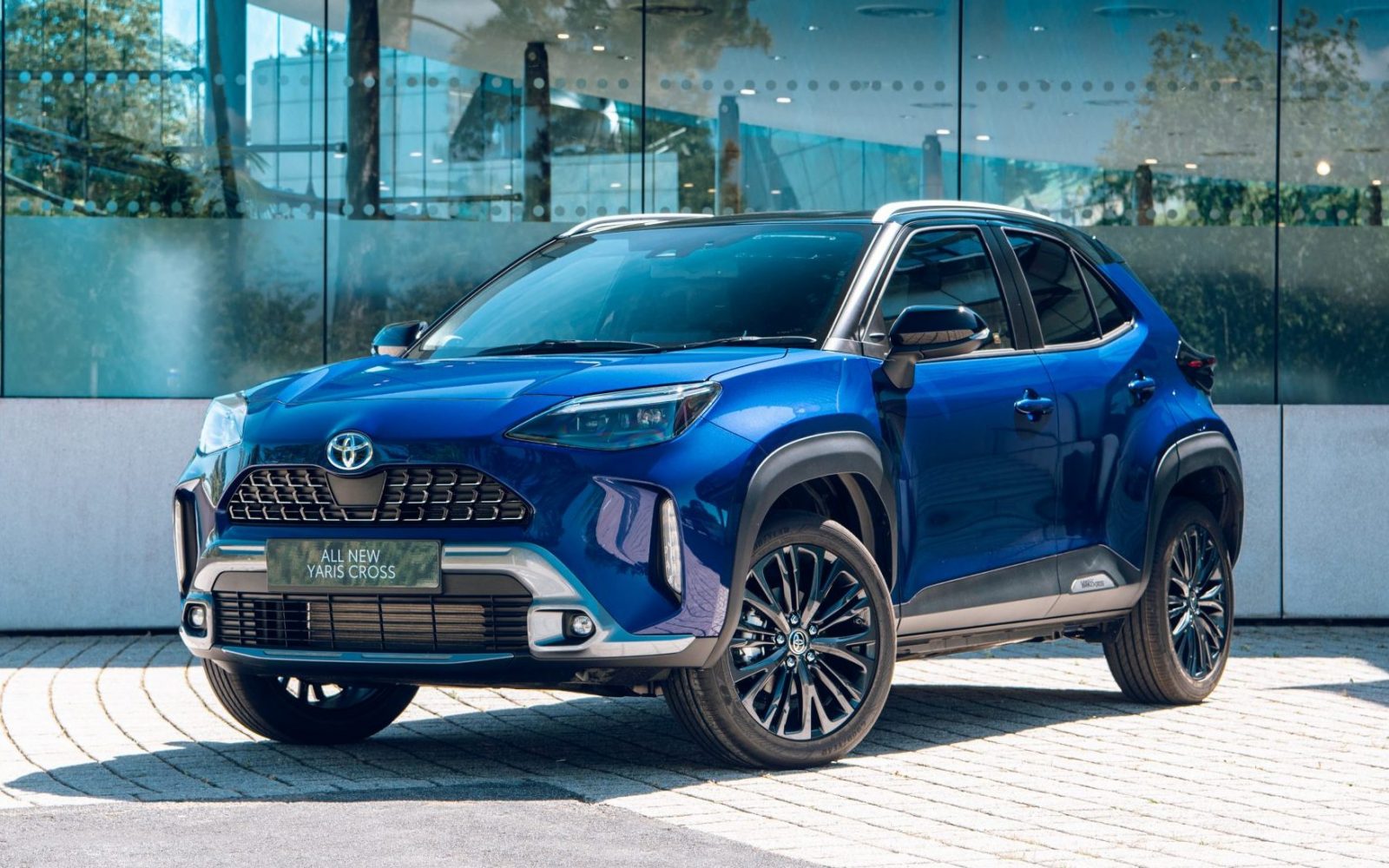
Hybrid driving: hybrid-specific tips
Sorry everyone else, but these tips are for hybrids only:
- Become familiar with the hybrid information display so you can know how much energy is being used.
- EV does it! Keep the car in EV mode as much as possible by using the accelerator gently, pressing it lightly but consistently.
- Improve efficiency with ECO mode, which reduces aggressive throttle response.
- Harvest time – braking gently and early helps the regenerative braking harvest more energy, which means EV mode can operate for longer periods.
- Keep an eye on the dials and gauges to fully understand the hybrid system and manage the charge levels in the hybrid’s high-voltage battery.
- If you’re in stop-start traffic, don’t put the car in neutral (‘N’) when stationary, as electricity will not be generated and the hybrid battery will discharge.
- Consider using cruise control (where fitted) to maintain steady speeds.
- When using climate control, Re-circulate mode reduces energy usage.
- Think about the environment! Constant or heavy use of systems like air-con, lights and wipers will increase energy consumption.
Hybrid driving: drive modes
Toyota hybrids have four drive modes: Normal, EV, Eco and Power. When you first start your hybrid, the car defaults to the ‘Normal’ drive mode, which automatically manages the most efficient use of both the engine and the battery.
Drivers can also select one of the car’s on-demand drive modes to achieve better fuel consumption in certain settings.
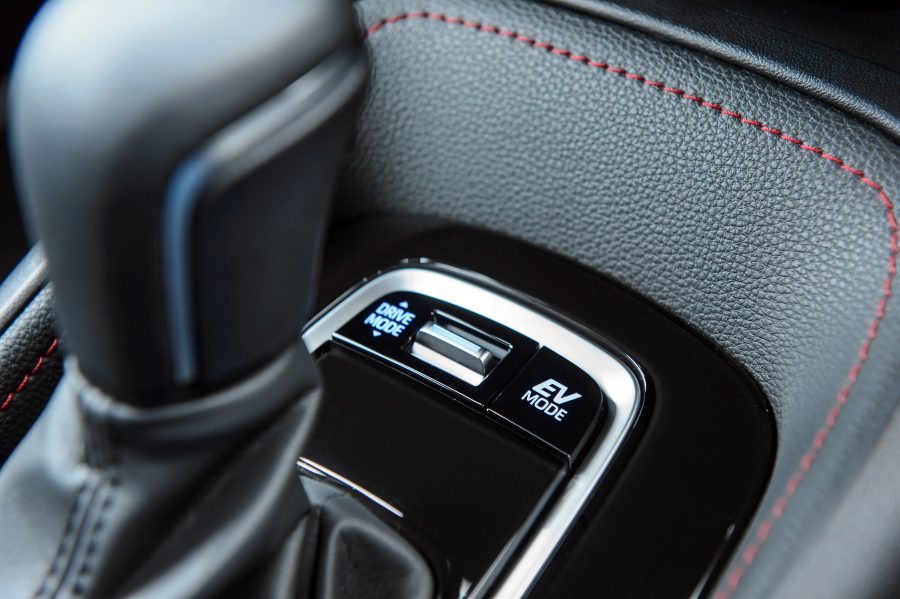
These drive modes are: EV Mode where the car is powered by the battery only during city driving, running near-silent and with no tailpipe emissions; Eco Mode that reduces A/C output and lessens throttle response to limit harsh acceleration; and Power Mode which boosts acceleration by using the hybrid battery to assist the petrol engine.
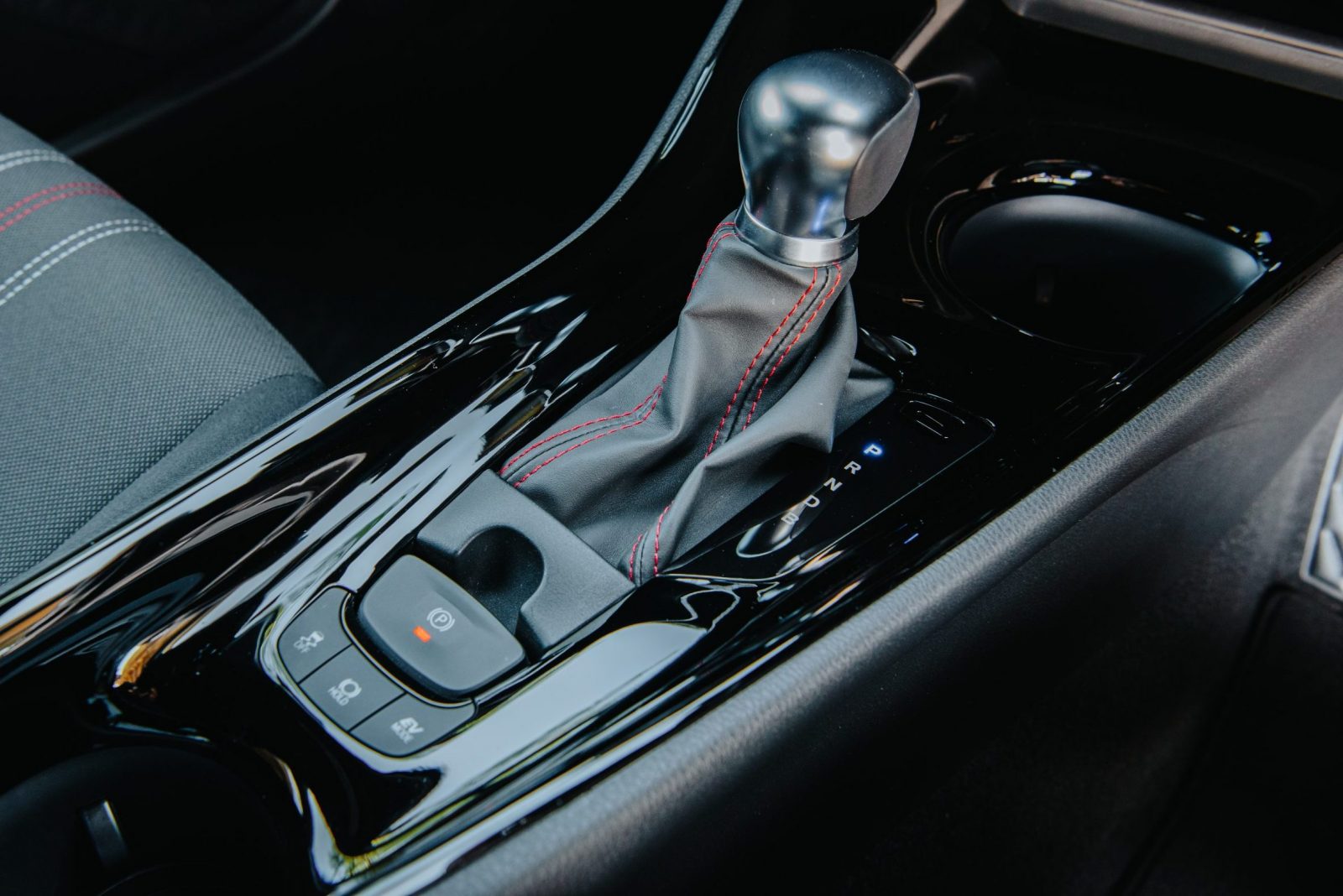
The shift lever offers four positions: R (Reverse), N (neutral), B (engine braking) and D (drive). For normal driving, D (drive) is absolutely fine, but should you need it, position B has the effect of engine-braking handy when descending a steep hill, for example. It’s not recommended to leave the car in position B for normal driving, mainly because you’d end up using more fuel than necessary!
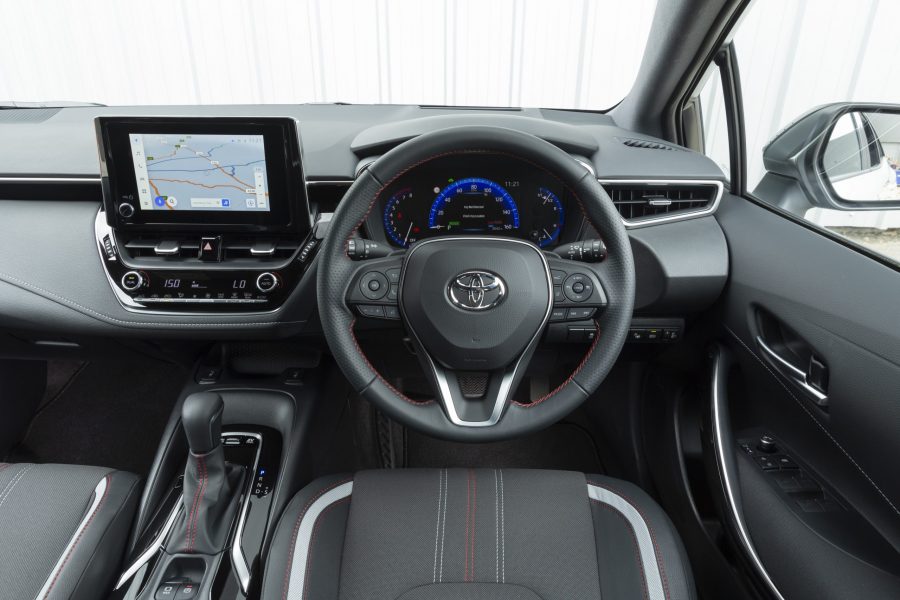
Hybrid driving: read the road ahead
Another great hybrid driving tip is to use the car’s battery whenever possible.
Another great hybrid driving tip is to use the car’s battery whenever possible. You can do this in town and urban driving by accelerating to your required speed, easing off the accelerator and then gently easing the accelerator on again. By doing this, you can activate EV mode – indicated by the dashboard light – which means that the engine has switched off and you are using the electric battery.
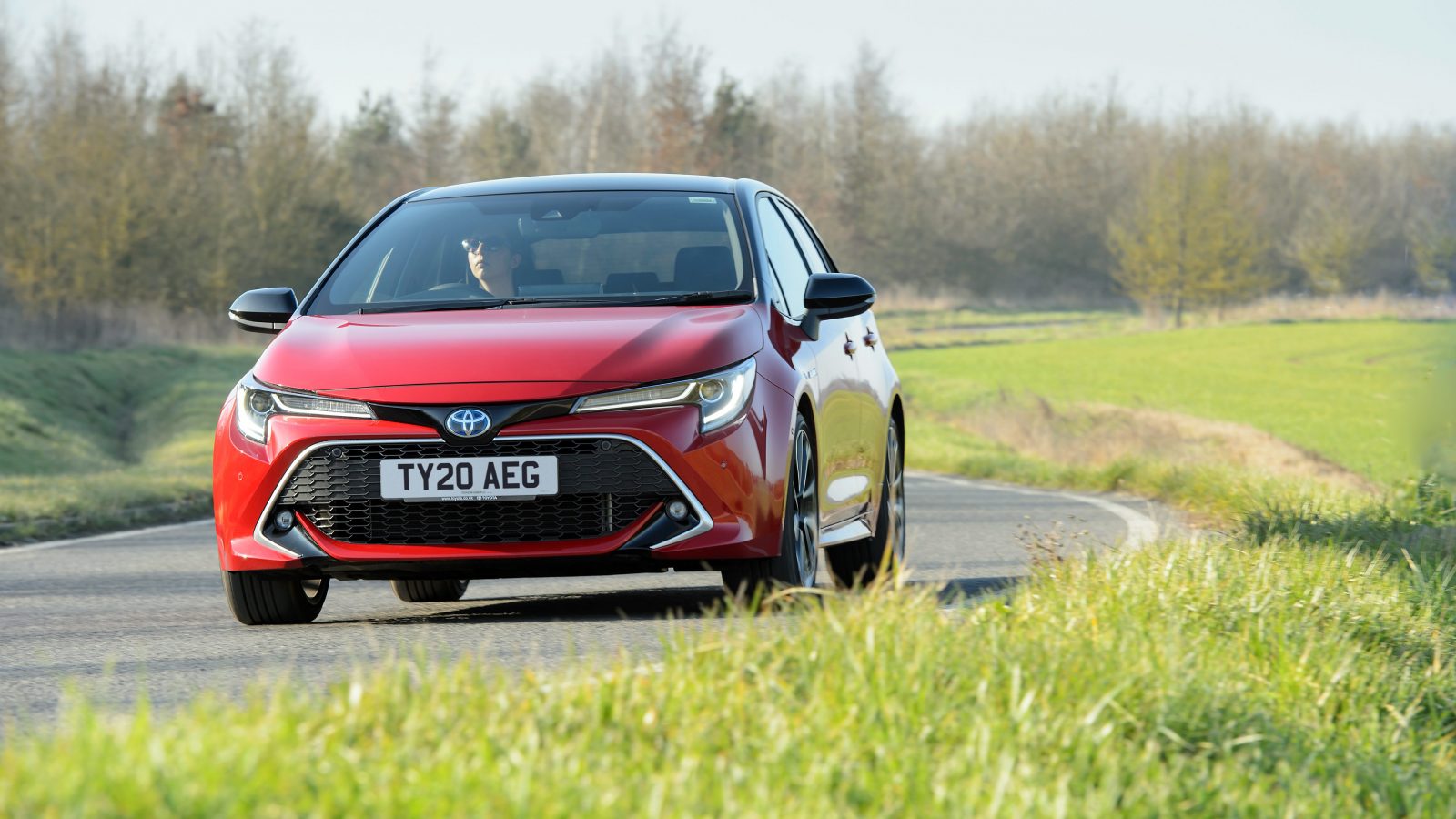
Try to maintain a constant speed and, as always, it’s important to read the road ahead. By doing this, you can reduce the amount of unnecessary braking and accelerating, using less fuel. Braking slowly and gently also maximises the amount of energy recovered by the regenerative braking system on the car.
Other factors to consider
Bear in mind that there are many factors that can affect a car’s performance, hybrid included. On cold days, your car will use more fuel as it warms up, but once it’s reached its optimum temperature, the MPG figures will increase.
Also, during the winter, you’re more likely to be using the air-conditioning, lights and wipers, all of which will use some electrical power from the battery. If you regularly travel the same route, don’t be surprised if you get better MPG figures during the summer than in the winter!
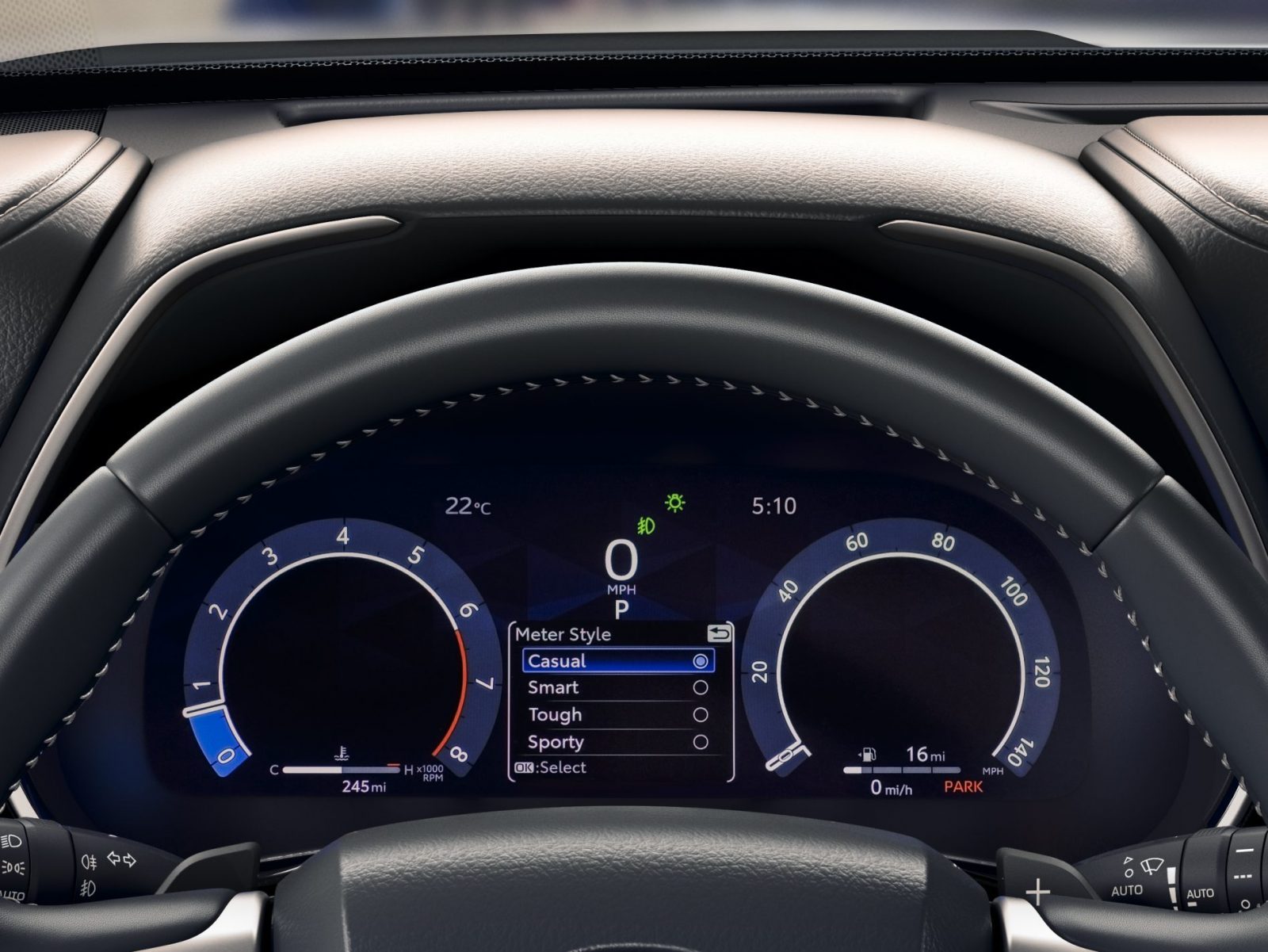
If you’d like more hybrid driving tips or want to discuss your driving technique with other hybrid owners, it’s worth visiting the Hypermiler website.
As a final note, please remember that these hybrid driving tips are published as general guidance on how to get the best fuel economy from your Toyota hybrid. Toyota encourages and supports safe driving at all times – please adhere to the rules of the road.
Read more: Toyota hybrid – how does it work?
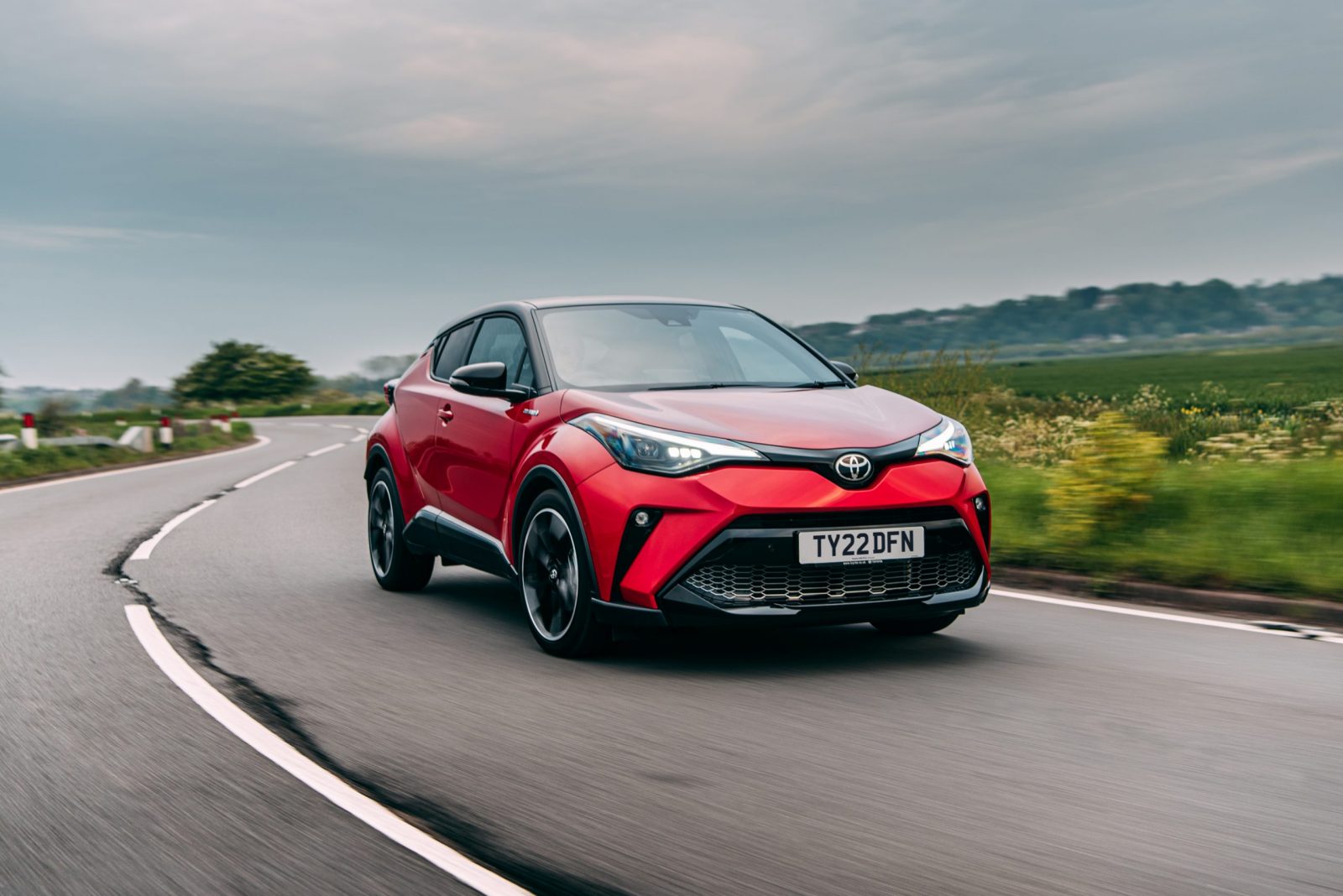
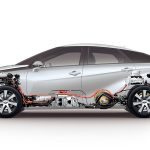

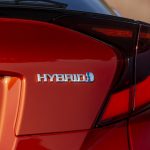
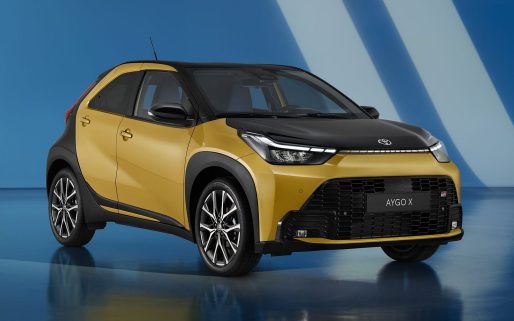
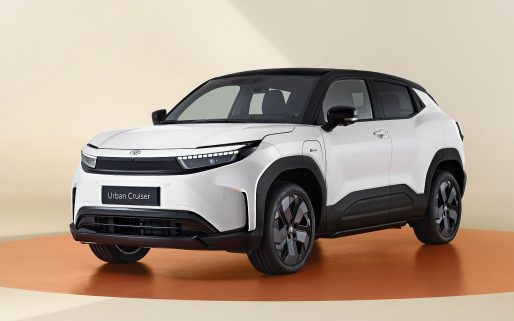

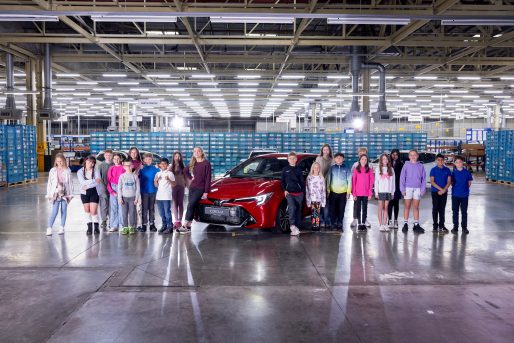
Hi Chas,
We have replied to your earlier comment! Many thanks.
I brought an Axio hybride 2016 when i start to drive not even a bit sound but after sometime it’s giving more sound seems like engine but i want to know why, is it normal? how do i know car is running from battery or fuel. my meter board language is Japanese i want to change it to English even user manual also Japanese i want English manual please. How do i change eco/ev mode while pressing car is running or when in P/N?
Hi Perera,
Thanks for your post. This specific model of car was never released to the UK market. Therefore, we do not have access to an English manual. Our advice would be to contact your nearest dealer and see if they can assist further! Many thanks.
Hello,
I have an Auris Touring Sport Hybrid 2016 and I have two questions about driving
Which is the best way to down way a long hill?
1- Using the brakes
2- Using the braking shift on the transmission
3- Keeping the cruising control on a lower speed
It is possible to vary the ratio of acceleration of the cruise control? Because the resume lever on the cruise control push this hybrid eco car as a formula 1 racing car wasting a lot of energy, even if the car speed is near the stored speed.
Regards
Hi Jesus,
When driving down hills, it is best to be in the engine braking mode. Obviously, if you need to reduce more speed we would recommend using the foot brake as well. Unfortunately, it is not possible to vary the ratio of the acceleration in cruise control mode, but we appreciate your feedback about the car’s functions and we will pass it to the product team for consideration in future models. Hope this helps! Many thanks.
The tire pressure sensors are a bit of a con, costing about 100euros to replace!
This is a suggestion for the web site which may help answer a lot of questions in this forum. The Tesla web site has a calculator where you can change relevant parameters like wheel size, speed, AirCon on/off, external temperature and see the impact on range. It might not be quite as simple with hybrid but in any case it’s only an estimate. On the Tesla site it is quite an eye-opener to see the difference each parameter can make.
My Auris TS is currently giving about 55mpg (in a very hilly area – instantaneous consumption under 8mpg on the steepest hills!).
I’ll try the blog tips – but, from comments here, I wonder a bit about consumption dropping in winter.
The Toyota Hybrid is a fantastic car. We have a Toyota Hybrid Battery Replacement and Toyota Hybrid Battery Repair service at Bumblebee Batteries which Hybrid Battery users across the USA love.
However, I would love to know what people think about the car? The battery? Other hybrid options compared against the Honda?
Hello, I just wanted to say that I really enjoyed your site and this post. You make some very informative points.Keep up the great work!
Hi Sumit,
Thank you very much, we really appreciate it.
Since buying Auris Elite the computer readings are far too optimistic. Full tank of 40 litres provides 572 mile according to computer but only did 440 miles. Disappointing 10 miles per £1 petrol. Empty tank light says 50 miles to empty but then does 20 miles. Quarter tank full says 320 miles but only achieves 193. 68 mpg indicated by computer whilst in reality get 45mpg And so on. In other words the computer guidance is rubbish ( a polite way of saying it is seriously misleading and techi who designed the read- out should commit harikiri. ). Best solution for economy – drive car only in the summer – carry no-one who is obese- and if you need to drive in winter then turn off everything, including windscreen wipers and heater and carry a big woollen scarf.
Main positive – nice ergonomic seats
Main grouse? The digital radio text does not roll fully to provide music details and freezes just as you want to find out what………………….
I just bought an Auris (picked up on 13th Dec 2016, so been driving for about a week at the time of this post.) Some gotchas I’ve found so far:
* I was taking the MPG display behind the wheel to be the trip average. It’s in fact the instantaneous MPG. So, I was wondering how a trip that was mainly downhill and slow traffic (so I could use EV mode) was ‘averaging’ 48-53 MPG. But, if you look at the same display for the 3 secs after you switch the engine off, THEN it shows you the average MPG (was more like 60 MPG for me.) It’s easy to get misled, since the display shows “100MPG” when you’re not using any fuel (either coasting or in EV mode.) After a bit, my brain just read that as “ignore the MPG display, it’s irrelevant for this part of the drive.) So I was only focusing on the MPG when fuel was actually being used.
* I’ve just passes half a tank of £50 worth (45 litres) of petrol. It took about 230 miles to get to that point. So, if I drive similarly in the future, I’ve get about 460 miles out of a full tank. That’s about 46 MPG. However, there are some things I’ve learned in that half tank that should make me more efficient going forwards…
* The trips that cost the most are those that are short, and from a cold start. So, nipping out for 5 mins at lunch, or jumping out to the supermarket in the evening after the car has been sitting on the driveway for a few hours, are the biggest fuel killers. One one trip on a particularly cold day, my instantaeous display showed 1.2 MPG, and that’s going less than 20 MPH before I’d even left my street! That’s because it was using a lot of fuel to get the cabin and engine up to operating temperature. Much better to: 1) take lunch in with you so you don’t need to do a short trip from a cold start at lunchtime, and 2) try and tag supermarket trips onto the end of a commute where possible. That means the short trip is being done at a time when the engine and cabin are already at operating temp, so the trip is far more fuel-efficient.
* It’s more efficient to accelerate up to a desired speed at a reasonable rate, then if possible use cruise control to stay there. I’d never used CC before, so this took a little getting used to. The first couple of trips, I was driving in a way that prevented the rev needle going into the ‘power’ zone and turning red when accelerating up to motorway speeds. But I discovered it was actually less fuel efficient that briefly over-revving to get to the desired speed and then easing off / applying CC to stay at that speed.
You need to remember that it needs to run-in first! This can take several thousand miles, though the initial increase will be in the first thousand or so. I have a Yaris Hybrid, and when I first got it, it wouldn’t get more than 50 MPG and acceleration was poor (I had not long had a test drive so the difference was obvious!). This was because everything was still tight.
For the first 1k I kept speed limited to 50 MPH and didn’t push the engine into the “power” band.
18 months and 14000 miles later, I get 65+ MPG and it’s proven to be an excellent car!
Weather, heater usage, Eco mode (or not) and how hard you accelerate can all harm fuel economy. Also check your tire pressures and alignment – I just had mine done and it made a huge difference (the MPG was slowly dropping off over time). On the journey home the average increased from 59 MPG to 63.5 MPG on a run that doesn’t usually improve with time, so I can only presume the actual MPG was even higher. I know 70+ MPG (real figure!) is possible on that journey.
Hi Ollie,
And the cow jumped right over the moon.
Sorry but I do not believe that your Auris Elite gives anywhere near 70 mpg.
I am lucky if my car gives me half that.
If it really does give you anything close to 70 then it means only that my local JEMCA Toyota dealers are even more disappointing than I thought.
Hi Godfrey
We are so similar
We both like but not love the Auris
We both think Toyota should not have lied and stretched the imagination in their brochure
We both know Geoffrey Archer, John Grisham or Alaistair mcclean could not make up the plot behind the mpg claims
We both know there is not a damn thing we can do
We will both look away from Toyota for our next car
We both think the Auris Elite is good enough without stretching the imagination and printing such rubbish in their brochure
Good luck. Regards. John
The fuel consumption figures in any car makers brochure are the result of a laboratory test dictated by the eu. Any fuel consumption indicators can only ever be speculation due to the wide range of real world variables. If you are only achieving half the guide consumption then either there is a technical issue or it’s your driving.
You are of course quite right. It must be the way I drive. I put my right foot on the accelerator and I use the same foot on the brake pedal when I need to slow down. Nick, your comments sound like they are straight from the Manufacturers stable. Wake up please and read what other honest drivers are saying about the fictitious balderdash Toyota have printed in their manual.
Put simply, Toyota should not be allowed to get away with make believe. Isn’t that why we have a Trades Description Act?
Hi John, think you missed the point, ALL car manufacturers put their cars through tests as stipulated by the EU. If you disappointed your Toyota car does not meet the brochure figures then you will be disappointed with any car from any other manufacturer. I not associated with Toyota or any other car maker, I just know the strict lab tests all have to adhere to do not give real life figures, but what is “real life”, drive mostly in Norfolk will give different figures to living in Scottish highlands. I just use quoted figures as a guide.
In a perfect world, Joe I am sure with no heater, no windscreen wipers, no radio, certainly no air conditioning and with the windows shut tight. No lights, no indicator, in fine weather with no wind resistance, limited use of brake, and even less use of the accelerator, disabling any internal light and the driver weighing less than 9 stone, with no other passengers, no luggage, handbag or spare tyre, no mobile phone (because the weight might upset the mpg figure, you will still not achieve anywhere near the lies that Toyota are shouting about so far as the Auris Excel. No Toyota it is not 76 mpg but luck if you get HALF that. It makes no difference in hot, cold or average weather, the figures are wrong, very wrong and it is unbelievable that Toyota have been allowed to get away with telling and justifying such LIES. This is my 4th Toyota – but after the misleading misinformation in their brochure, I would think very hard before buying another.
Hi John,
Thanks for getting in touch. We’re sorry to hear you’re not satisfied with your vehicle. Have you spoken with your local Centre or customer relations about this issue?
Hi Ella, I bought my Aurus from Jemca, Colindale as a Motability Car
From the second I collected my car I realised there were a few things totally wrong with the car I was promised and that was described in the then brochure – details of which were changed in a reprint,
My brochure and the sales man described important features which were quite wrong.
I complained to the Jemca and met with the Manager but he was not in the least interested.
The man who sold me the car had lost his job at Jemca. Maybe he had misled or misrepresented details to other buyers.
The Manager decided I had misunderstood or misheard the salesman.
Being disabled I did not have the energy or time to continue arguing with Jemca. I
realised there is was little point in wasting further time and effort in talking to my local Toyota dealers.
To put it bluntly I was bullied by the Jemca Colindale and forced to accept a car that will always be a disappointment.
What is interesting is that I have bought previous Toyota cars from Jemca Colindale and years ago from Pennell’s in Finchley Road. Each time the sales men were great but on this occasion I feel I was very badly treated.
Hi John,
We’re very sorry to hear this. We have passed all this information to our customer relations team and someone will be in touch via email over the next 72 hours. Many thanks and our sincerest apologies, once again.
Virtually ALL manufacturers figures show very good return for mpg. But ALL manufacturers vehicles are tested the same way and in accord with regulations. These are what I would call “laboratory conditions” and the replies to some post on here from Toyota representatives have explained the way of testing by ALL manufacturers is the same and in accord with regulations. Until the regulated way of testing is done then ALL manufacturers figures are not going to be in the real world, and therefore I don’t expect to each ANY quoted figure, but what I can do is check one manufacturer against another and take out of the figures what I want and dump the rest.
Trouble is if quoting real life figures is that we all drive differently. Someone may think they are driving economically but compared to another driver are, in reality, heavy footed. Some people don’t care too much about mpg or pollution figures, they just do there own thing – do you want their opinions taken into account. Unfortunately the “real world” we all live in is not perfect. Regards.